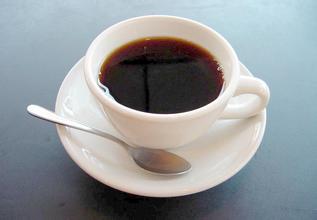Rich and unique aroma of Bolivian Coffee Manor flavor and taste characteristics of Xuemai Manor
The seat of the government and parliament, the largest city and political, economic and cultural center in the country, with a population of 2.7416 million. The city center is 3660 meters above sea level, the highest in the world.
The capital La Paz
Capital La Paz (10)
A high seat of government. La Paz was founded in 1548 and means "city of peace" in Spanish. [6]
Sucre.
The legal capital, the seat of the Supreme Court, with a population of 284000, 2790 meters above sea level. Founded in 1538, the city was formerly known as Chuquisaka. In 1809, the first uprising against Spanish rule broke out in South America. Bolivia declared its independence here in 1825 and became the capital in 1826. In 1839, it was renamed Sucre in honor of the second president of Bolivia, General Antonio Jos é Sucre. In 1898, the central government, presidential palace and parliamentary hall were moved to Russ, and the Supreme Court stayed in Sucre. Sucre has been listed on the UNESCO list of cultural heritage of mankind. [5]
Santa Cruz
Founded in 1561 with a population of 2.7762 million, it is a new industrial and commercial city, the second largest economic and cultural center in the country, and the capital of Santa Cruz province. Located in the eastern plain, 437 meters above sea level, with an annual average temperature of 23.8.
Kochabamba
The third largest city in the country, the capital of Cochabamba province. Located in the river valley in central Bolivia, it is an important transportation hub. It has a population of 1.9384 million and is 2558 meters above sea level. [7]
Geographic environment editing
Location domain
Bolivia is located in central South America, a landlocked country. It is bounded by Brazil in the northeast, Paraguay in the southeast, Argentina in the south, Chile in the southwest and Peru in the west. It belongs to temperate climate. It is an inland plateau country in South America. With a land area of 1098581 square kilometers, Bolivia ranks fifth in South America. Bolivia, eighth in the Americas, not only has a unique planting environment, but also has an excellent variety of coffee-Typica. In the past two hundred years, the main variety of coffee in Yanggas area is the ancient Tibica. Tibica coffee has a balanced and soft flavor, with lively aroma and rich sour taste. Unfortunately, the low production of Tibika and poor disease resistance have led to low coffee production in Bolivia. There are even fewer opportunities to taste Bolivian coffee. So in order to increase coffee production, Bolivia, like other Central American countries, began to experiment with growing Kaddura and Catuai. Kaddura variety has high yield, high quality, rich sour taste and resistance to leaf rust. Kaduai variety has high yield, strong environmental adaptability and tolerance to diseases and insect pests. Planting these two varieties is expected to increase the yield as much as possible while ensuring the flavor quality.
The overall taste of Bolivian coffee is rich and balanced, the aroma is rich and unique, similar to the mixture of flower and fruit aroma, impressive. The perennial low temperature environment makes the coffee fruit grow slowly, compact enough, the aroma is also charming, the floral aroma is obviously medium and low acidity, but the feeling is not monotonous, on the contrary, it appears soft and fresh, with the sour taste of citrus fruit.
Because Bolivia's production is low, we don't have many chances to drink it. It is precisely because the smaller the output, the more precious it is. Because of my personal preference for Central American coffee, I still have more expectations for Bolivia, a small and beautiful coffee producing country. Large estates / farms (plantation) usually have their own washing plants, and smaller individual coffee farmers are more able to control the quality and flavor of their output. Located in the Wiki Valley of the western plateau of Papua New Guinea near the kimel Valley, Chimere Manor, like many large farms / estates, has its own washing plant, but it is in fact an estate owned by many independent small coffee farmers of the surrounding Opais people and, in a sense, a private cooperative. Due to the excellent growth conditions and the stable quality control process of the treatment plant, the coffee produced has an active and bright sense. the main problem faced by coffee producers who retain a considerable degree of flavor uniqueness of Papua New Guinea coffee is to strive to maintain stable quality. The coffee here is generally well-balanced and refreshing, with a unique aroma.
Ecuador is one of the few countries in South America that produces both Arabica coffee and Robbins coffee. However, as the land suitable for Arabica coffee trees is decreasing, the production of Robbins coffee is gradually increasing. The best Arabica coffee comes from the Andes, especially the Chanchagu Valley (Chanchamgo Valley), which is divided into two mountains, extending from south to north to central Ecuador.

- Prev

Introduction to the characteristics of Costa Rican Fire Phoenix Manor Coffee Flavor
From 1821 to 1870, the Costa Rican regime was mainly controlled by J.R. Morapolas and J.M. In the hands of the two Montealegre families, the economy has developed greatly, and coffee has grown particularly rapidly and become a major export product. From 1855 to 1857, President Morapolas commanded the Costa Rican army and other Central American countries to crush American adventurer W. Volcker's invasion defended
- Next

Introduction to the flavor and taste characteristics of the coffee manor in Arusha, Tanzania with light sour taste
Fresh is the most important factor in buying Kilimanjaro coffee beans. There are several steps to judge whether the beans are fresh or not: 1. Grab a handful of coffee beans and feel whether they are solid beans with the palm of your hand. 2. Whether it is enough to smell the aroma close to the nose. 3. Put a bean into your mouth and bite it twice. There is a clear sound indicating that the bean is well preserved and not damp. If you want to buy a single item
Related
- Does Rose Summer choose Blue, Green or Red? Detailed explanation of Rose Summer Coffee plots and Classification in Panamanian Jade Manor
- What is the difference between the origin, producing area, processing plant, cooperative and manor of coffee beans?
- How fine does the espresso powder fit? how to grind the espresso?
- Sca coffee roasting degree color card coffee roasting degree 8 roasting color values what do you mean?
- The practice of lattes: how to make lattes at home
- Introduction to Indonesian Fine Coffee beans-- Java Coffee producing area of Indonesian Arabica Coffee
- How much will the flavor of light and medium roasted rose summer be expressed? What baking level is rose summer suitable for?
- Introduction to the characteristics of washing, sun-drying or wet-planing coffee commonly used in Mantenin, Indonesia
- Price characteristics of Arabica Coffee Bean Starbucks introduction to Manning Coffee Bean Taste producing area Variety Manor
- What is the authentic Yega flavor? What are the flavor characteristics of the really excellent Yejasuffi coffee beans?

